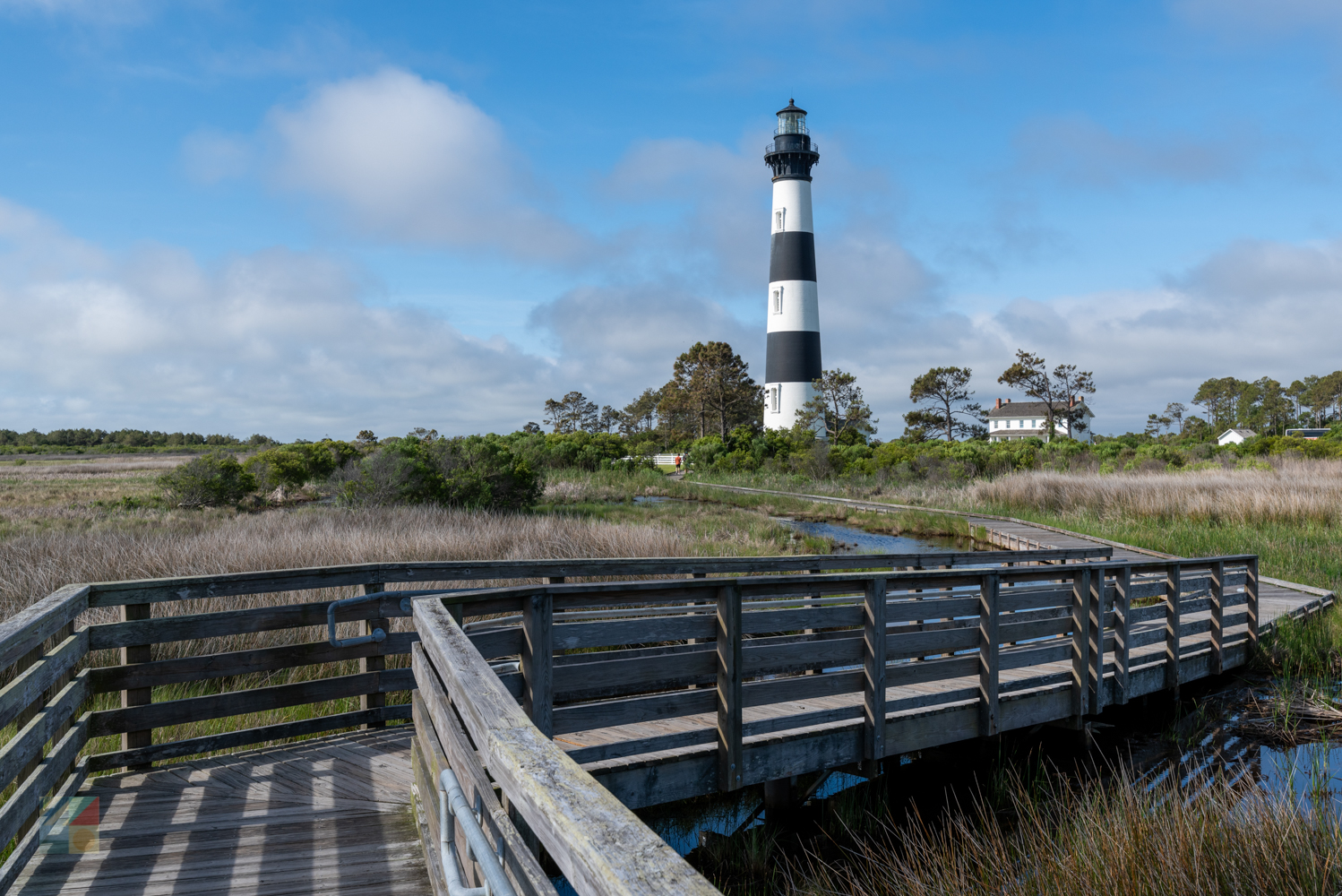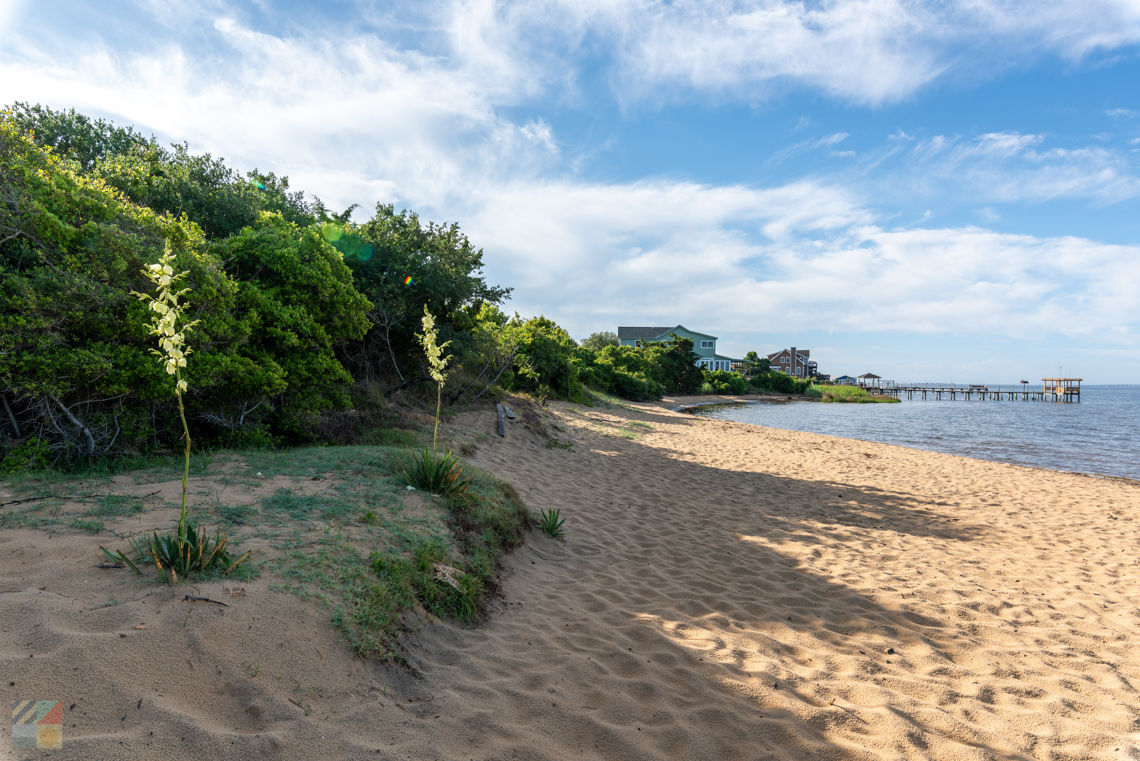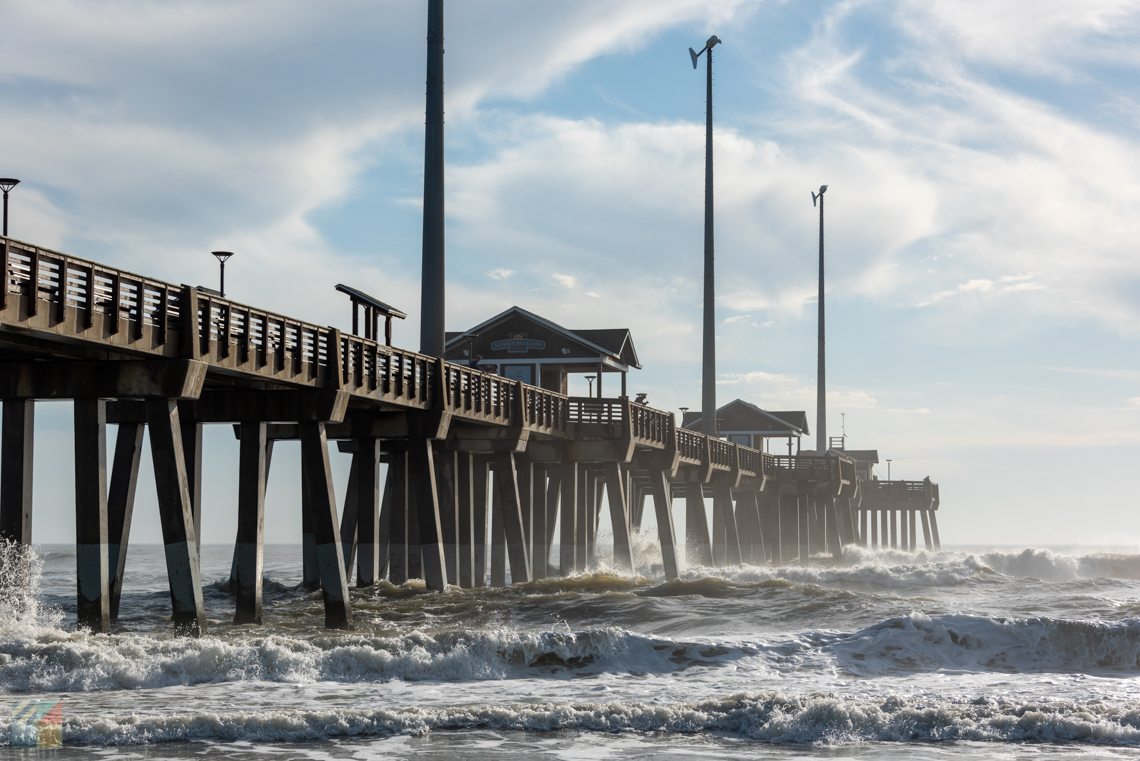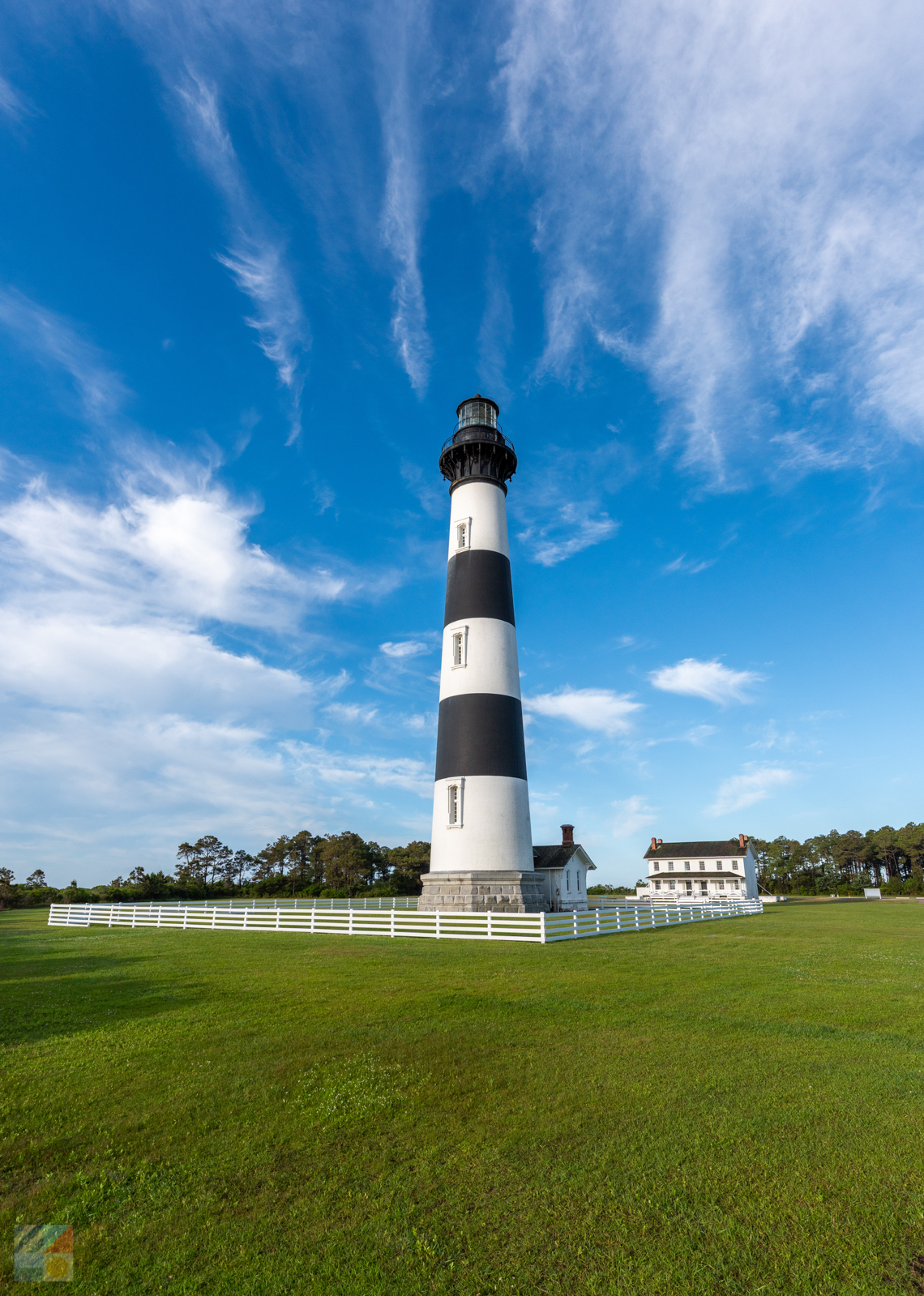
Nags Head has a relatively short but rich history that dates back to its first roots as a vacation destination. Popular with elite plantation owners and later wealthy northerners and adventurous fishermen, the town has never lost its distinction as one of the best beach towns on the coast.
Facts
The history of Nags Head is relatively obscure before the 1830s. Historians believe that the area was first populated by small clusters of Native Americans, and later by small settlements of sustenance farmers and fishermen.
By the 19th century, however, the region was developing a small but devout fan base of wealthy visitors who set up ramshackle beach cottages close to present day Jockey's Ridge State Park. These cottages were later transformed to aristocratic beach homes, and by the 1950s, the area was hopping with a fishing pier and even a renowned casino.
Unlike other regions of the Outer Banks that didn't really experience a development boom until the latter half of the 1900s, Nags Head remained steadily popular for well over a century.
With that being said, the 1990s and 2000s did produce an extra boost of large-scale vacation homes of 6 bedrooms or more, thanks to the real estate boom which had far-reaching affects along the North Carolina coastline.
Around the same time, new efforts and initiatives were put in place to protect the beaches and restore some of Nags Head's most treasured landmarks, including Jennette's Pier. These repairs and renovations were done out of both community spirit and out of necessity, as in 2003 Hurricane Isabel wreaked havoc along the beaches.
Regardless of seasonal storms, lofty and failed development projects, and an ever-changing landscape of beaches and communities, Nags Head never lost its charm as the Outer Banks' flagship vacation town
Events
The following timeline outlines the big events and important landmarks that helped shape this essential Outer Banks community.
- 18th Century - The first European residents of Nags Head, known as Bankers, live in quiet, sparsely developed communities along the soundside.
- 1830 - The first genteel plantation owner, Francis Nixon, discovers Nags Head and purchases 200 acres to use as his private summertime retreat from the hot and humid Perquimans County weather
- 1830s - Nixon creates a "home base" at the base of Jockey's Ridge and starts to invite friends and family members to his beach retreat. More families follow, and smaller cottages are built in the region.
- 1838 - The first recorded "hotel" pops up in Nags Head.
- 1850s - More than two dozen cottages are constructed along the beach and especially the Roanoke Sound. A boardwalk is built to the ocean to make the trek to the shoreline easier. Harper's Bazaar publishes an article on the area, referring to the community as "Nags Head."
- 1855 - The first oceanfront home is constructed by Elizabeth City resident, Dr. W.G. Pool. Reportedly, a 50 acre property was sold to Pool by the local Midgett family for around $30.
- Late 1850s - Pool divides his properties into a series of oceanfront lots and sells them to friends and family for around a dollar each. The resulting stretch of homes, known as the Unpainted Aristocracy and later Millionaire's Row, is formed.
- 1885 - 13 cottages are created within 300' feet of the ocean, constructed mainly out of salvaged wood.
- 1910s and 1920s - More than a dozen new cottages are built along the oceanfront, as well as St. Andrew's By the Sea Episcopal Church. These new buildings would come to define the distinctive Nags Head style of architecture.
- 1930s - The now long gone Nags Head casino is constructed.
- 1933 - "Transient Camps" are set up along south Nags Head's Whalebone Junction by the by the U.S. Civil Works Administration to accommodate the 1,500 workers building a dune system from Corolla to Ocracoke. These cabins were later moved to the base of the Jennette's Pier as easy-going accommodations for visiting fishermen
- 1939 - Jennette's Pier opens in Nags Head, becoming one of the first fishing piers along the Outer Banks.
- 1946 - Owens Restaurant, one of the oldest operating restaurants in the Outer Banks, opens in Nags Head.
- 1962 - The Ash Wednesday Storm devastates the town Nags Head, destroying dozens of cottages, hotels, buildings, and causing massive damage to essential landmarks like the Nags Head Casino.
- 1970s - The building where the Nags Head Casino was formerly located is sold. The site is now occupied by Kitty Hawk Kites
- 1977 - The historic beach cottages along Millionaire's Row are added to the National Register of Historic Places.
- 1980s, 1990s and 2000s - Development booms and more high-rise hotels and modern vacation homes are constructed along the oceanside and soundside.
- 2003 - Hurricane Isabel hits Nags Head causing massive damage to oceanfront homes as well as the historic Jennette's Pier. The pier subsequently closes for nearly a decade.
- Late 2000s - the town of Nags Head begins a lengthy several-year Beach Nourishment project to widen the beaches.
- May, 2011 - Jennette's Pier reopens its doors to visitors in a ceremony overseen by Governor Perdue.
- August 2011 - Hurricane Irene tears through the region, but the newly reconstructed Jennette's Pier, as well as many other modern landmarks and the recently widened beaches, survive.
Historic Sites
Nags Head visitors are not only close to the wealth of historic sites in neighboring Roanoke Island, but also just a shell's throw away from a number of treasured landmarks in their own hometown.

- Jockey's Ridge - The distinctive sand dunes that form Jockey's Ridge are the tallest along the East Coast and are a historic treasure in their own right. These massive piles of sand actually date back thousands of years, and the neighboring soundside woods are home to popular excavation sites for archeologists uncovering the early Native American OBX residents.

- Jennette's Pier - This historic 1939 fishing pier has undergone a facelift in recent years, and is unrecognizable from the original 754' feet long wooden structure. With that being said, the pier house has a wealth of information on both the local ecosystem and the area's culture. The modern pier also boasts some of the best panoramic ocean views on the beach.
- Millionaire's Row - Nearly 40 structures comprise Nags Head's Historic District, and Millionaire's Row, or the "Unpainted Aristocracy," remains one of the most intact stretches of classic beach cottages in the state of North Carolina. Many of these homes date back 75 years or more, and feature the "classic Nags Head" architecture of wrap-around porches, wooden hurricane shutters, and weathered cedar shaked exteriors.

- Bodie Island Lighthouse - Opened in 1870, Bodie Island Lighthouse is one of four historic Outer Banks lighthouses that date back to the 19th century. The lighthouse is located just south of the Nags Head town limits, and is an easy 5-10 minute drive away for most visitors.
The Legendary Nags Head Casino
Few modern visitors realize that the site of the flagship Kitty Hawk Kites store across from Jockey's Ridge State Park was once the home of the massive, and undeniably popular, Nags Head Casino.
Built in the 1930s, the casino was purchased and managed by Ras Wescott, who would oversee the establishment for a wild 40-year run.
The structure at the base of the towering Jockey's Ridge sand dunes was an opulent, two-story building that featured a world of activities for the growing crowds of Nags Head beach goers. The lower level was home to a snack bar, pool tables, duck pin bowling, and pinball machines, while the upper level boasted a huge wooden dance floor that became a popular venue for the after-hours crowd. This fun and slightly-naughty atmosphere made the casino a favorite Nags Head go-to for World War II servicemen who were on leave, and in search of a little wild vacation entertainment.
More than 1,000 patrons could crowd into the casino, and legendary artists would swing by to play in front of sold-old crowds. Music legends who performed at the Nags Head Casino included Artie Shaw, Woody Herman, Duke Ellington, Count Basie, and even Louis Armstrong, who paid a visit in 1958.
The Nags Head Casino remained popular well after the war and its 1950s heyday, and eventually became popular with new patrons who danced the twist and the shag to Maurice Williams and the Zodiacs, and the Hot Nuts.
During this new 1960s era, legend has it that Mr. Wescott - still a very active manager - despised the new long hair trends that were trickling into the town, and would banish patrons to a spot behind the building known as Monkey World if they refused to cut their hair before entering.
The Ash Wednesday Storm of 1962 damaged the building and a winter storm in the 1970s inevitably caused the roof to collapse. After this event, the party was officially over, and Wescott sold the building and the site.
Today, the giant Kitty Hawk Kites and adjacent Jockey's Ridge Crossing give away no signs of the former casino's glory, but descendants of Wescott's many local employees, as well as couples that courted on the dance floor and later married, will never forget this lost but essential Nags Head icon.
Bodie Island and the Bodie Island Lighthouse
Bodie Island creates a lot of confusion for new visitors, beginning with its name. "Bodie" is officially pronounced "Body," not "Bow-dy," although it's not unusual to hear both by residents and visitors alike.
The other misconception is the whereabouts of Bodie Island itself. Originally separated from the Currituck Banks by the Currituck Inlet, the inlet has since closed up several centuries ago, and the island now technically spans from Oregon Inlet all the way to Virginia. No longer an island, the present day "Bodie Island" is effectively a peninsula, which runs a whopping 72 miles along the coastline.
Even so, most longtime residents and visitors still consider Bodie Island to be concentrated to a small area just south of Nags Head. Undeveloped except for a string of beach homes along the northern coastline, the majority of this Bodie Island region is comprised of wide-open beaches and pretty undeveloped, natural landscapes which are managed by the Cape Hatteras National Seashore.
History of Bodie Island
The name of Bodie Island dates back to the local Body Family, who initially settled the area, although legends persist that the name originated from the hundreds of bodies that washed ashore from the innumerable shipwrecks along the Diamond Shoals.
Experts believe that the island was formed around 1738, when "New Inlet" was opened, separating the region from Hatteras Island to the south. Oregon Inlet would open in 1846, cutting off the southern edge of Bodie Island and creating a new region, known as "Pea Island." When New Inlet closed in 1933, the Outer Banks from Hatteras Village to Corolla was effectively cut into two "islands" - Bodie and Hatteras.

Bodie Island Lighthouse
The reason why the name Bodie Island stuck for the section of land north of Oregon Inlet is due largely in part to the Bodie Island Lighthouse. Built in 1872, the lighthouse was the third constructed along this stretch of the Outer Banks to assist mariners passing along the very dangerous offshore shifting sandbars, known as the Diamond Shoals.
The first lighthouse was constructed around 1847, but was abandoned just 12 years later because of both a bad foundation and limited lighting capabilities. The second, built in 1859, was destroyed just three years later by Confederate troops who worried that it would be utilized by Union soldiers during the Civil War.
The current structure was built in 1872, and was the tallest of the three at an impressive 156' feet tall. Outfitted with a first order Fresnel lens, and automated in 1940, the lighthouse was operational for well over a hundred years until it was closed in 2009 to be completely renovated and re-opened to the public.
When the lighthouse was officially re-opened in 2013 after a lengthy renovation, visitors could climb to the top of the lighthouse and admire panoramic views of the Atlantic Ocean and Roanoke Sound.
Today, the lighthouse is open seasonally to climbers, (generally from spring until late September), for a small fee. The lighthouse is maintained by the National Park Service, which also operates a Visitors Center and gift shop on the premises. The 15 acre site also features nature trails which wind through the maritime forest en route to the Roanoke Sound.
For more than 30 years, Resort Realty has been providing unforgettable Outer Banks vacations. From Corolla to Hatteras Island, Resort Realty offers nearly 550 Outer Banks vacation homes that range from cozy 1-bedroom condos to exquisite...
Celebrating 36 years of service in Outer Banks vacation rental property management, Resort Realty is a company that operates locally with in-house feet on the ground; meaning impeccable care for your home with constant communication from our staff...
Looking to fly a kite on the beach or atop the spectacular dunes of Jockey’s Ridge State Park? Kitty Hawk Kites offers the largest selection of kites, wind art, flags, games, and toys on the Outer Banks, with experts on staff to get you flying...




